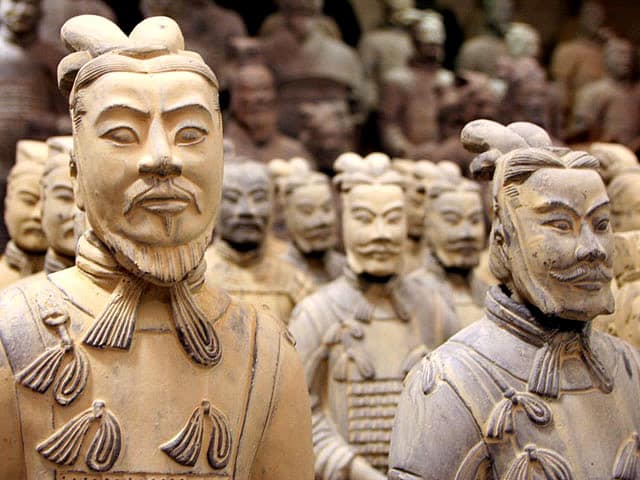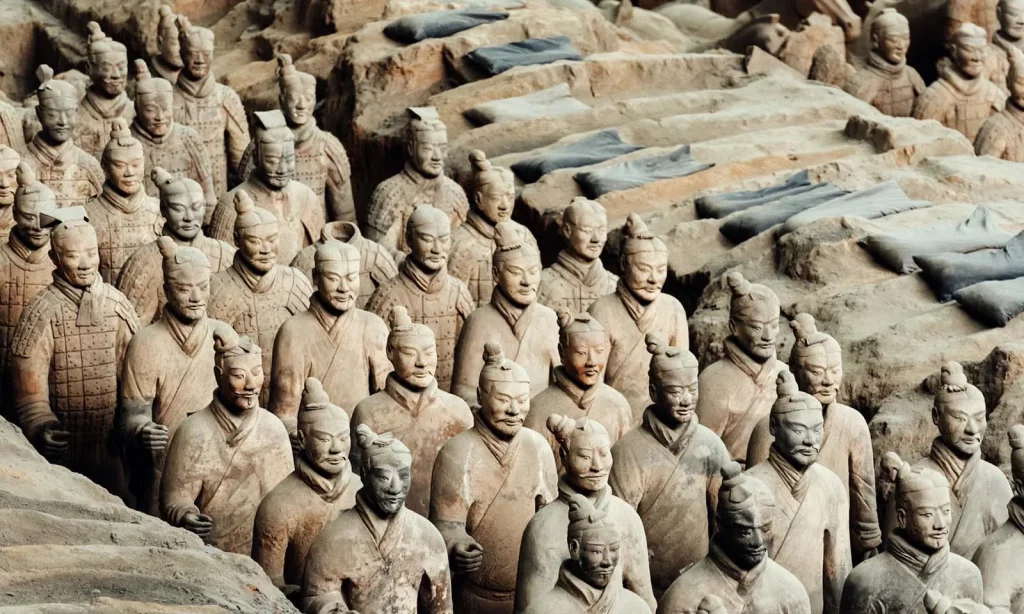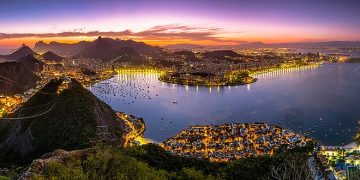In the eastern suburbs of the city, there is hidden a magnificent army that has passed through thousands of years – the Terracotta Warriors and horses of the Qin Shi Huang Mausoleum. They silently guarded the tomb of the first emperor, witnessed the glory and decline of the Qin Dynasty, and also showed the brilliance and greatness of ancient Chinese civilization to the world.
I. Historical background
The discovery of the Terracotta Warriors in the Tomb of Qin Shihuang dates back to the spring of 1974. At that time, several farmers accidentally dug up fragments of the clay figurines while digging a well, and the discovery shocked the world. With the deepening of archaeological work, a huge underground army gradually appeared in front of the world. Built by Qin Shi Huang to defend his mausoleum, these terracotta warriors are arranged according to the actual army, vividly reconstructing the military strength and technical level of the Qin Dynasty.
Qin Shihuang, the first emperor in Chinese history, unified the six kingdoms and established a centralized Qin Dynasty. In order to preserve his country forever, he recruited hundreds of thousands of craftsmen and spent 38 years building a large-scale mausoleum. The terracotta warriors are an important part of this tomb. They not only represent the military power of the Qin Dynasty, but also reflect the emperor’s pursuit of eternal life and his desire to control the country.

- Cultural value
The cultural value of the terracotta warriors is multifaceted. They are not only an important representative of ancient Chinese military culture, but also a vivid reflection of the political, economic, cultural and social conditions of the Qin Dynasty.
The terracotta warriors show the military system and technical level of the Qin Dynasty. These terracotta figures are arranged according to the actual army organization, including infantry, cavalry, chariot soldiers, etc., which vividly reappears the military organization structure and weapons and equipment at that time. By studying these terracotta warriors, we can gain an in-depth understanding of the military system, tactics and strategies, and the development level of weapons and equipment during the Qin Dynasty.
The terracotta warriors and horses are also the embodiment of the artistic style of the Qin Dynasty. The pottery figures are exquisitely carved and detailed. Their facial expressions, clothing textures and gestures are vivid, showing the high level of sculpture art in the Qin Dynasty. At the same time, these terracotta warriors also provide us with valuable materials for the study of aesthetic concepts and artistic styles in the Qin Dynasty.
The terra-cotta warriors also have high historical research value. Through the study of these figurines, we can understand the social system, cultural customs and people’s living conditions in the Qin Dynasty. These terracotta warriors are not only witnesses to history, but also important clues for us to explore ancient civilization.
- Artistic characteristics
Highly realistic: The terracotta warriors are made according to the life-size, and each terracotta has a unique facial expression and movement posture. Their costumes, hairstyles and weapons were carefully designed and crafted according to the historical background of the time. This realism is not only reflected in the shape of the clay figurines, but also reflected in their expressions and temperament. Each clay figure is like a living warrior, ready to fight for the country.
Divinity: The sculpture of the terracotta Army is not just a simple imitation of reality, but has been artistically processed and refined. By grasping the key parts for artistic exaggeration and refinement, the sculptors made the shape of the terracotta Army rise from “resemblance in form” to “resemblance in spirit”. This kind of divinity makes each clay figure have unique personality and vitality.
Flexible and diverse artistic techniques: The sculpture of the Terracotta warriors is not a single, but the use of a variety of artistic techniques. For example, through contrast processing to form the unity of the overall effect; Use round carving, relief, line carving and other carving techniques to create a vivid image; The clay figurines were made by the combination of molding and hand kneading. These flexible and varied artistic techniques make the image of the terra-cotta warriors both concise and rich, exquisite in simplicity, partial fine but without losing the overall momentum.
- Field visits and feelings
As I stood in front of the museum of Terracotta Warriors and Horses in the Mausoleum of the First Emperor of Qin, I felt a sense of awe. Into the museum, you will see rows of neat and uniform terracotta warriors, they seem to be a grand army through thousands of years, quietly guarding the tomb of the first emperor.
Observe each clay figure, their facial expressions are different, some dignified, some lively. Each pottery figure wears different costumes and holds various weapons and equipment, showing the military style of the Qin Dynasty. I can feel the spirit of courage and fearlessness emanating from them.
In the Terra-Cotta Warriors Museum, I also saw many precious cultural relics and historical sites. These relics and relics not only bear witness to the glory and greatness of the Qin Dynasty, but also give us a deeper understanding of the cultural and historical background of that era. Standing in front of these terracotta warriors, I felt as if I had passed through the era a thousand years ago, and felt the changes and heroism of that era.

Fifth, summary and reflection
The Terracotta Warriors and horses in the Mausoleum of the First Emperor of Qin are a shining pearl of ancient Chinese culture. They are not only of high historical, cultural and artistic value, but also an important clue for us to explore ancient civilization. Through the study and appreciation of these terracotta warriors, we can have a deeper understanding of the historical and cultural background of the Qin Dynasty, and feel the heroic spirit and courageous spirit of that era.
The Terracotta Army is also one of the outstanding representatives of ancient Chinese sculpture art. Their exquisite carving techniques and fine details show the superb level of sculpture art in the Qin Dynasty. These terracotta warriors are not only important materials for us to study ancient sculpture art, but also important carriers for us to inherit and carry forward the excellent traditional culture of the Chinese nation.
In the future development, we should pay more attention to the protection and inheritance of cultural heritage such as the Terracotta warriors. Through strengthening the awareness of cultural relics protection, improving relevant laws and regulations, and improving scientific and technological protection means, we can ensure that these precious cultural heritage can be effectively protected and passed on. At the same time, we should also publicize and promote the value and significance of these cultural heritages through various channels, so that more people can understand and pay attention to the treasures of ancient Chinese culture.
During the field visit to the Terracotta Warriors, I deeply felt the unique charm and attraction of these cultural heritages. They are like a door to the ancient time, so that we can pass through the tunnel of time and space, and personally feel the changes and heroism of that era. I believe that in the coming days, with the continuous progress of science and technology and the improvement of people’s cultural literacy, we will dig deeper and inherit the value and significance of these precious cultural heritage.





















